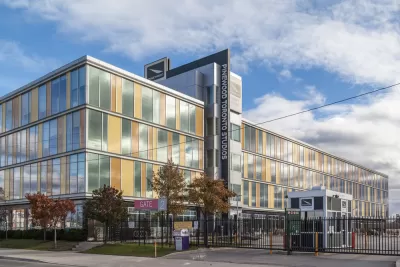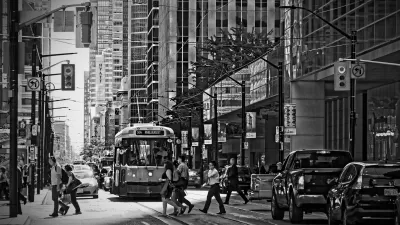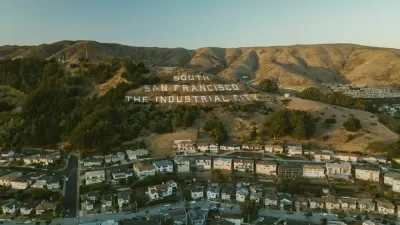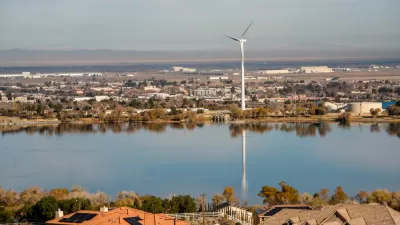Toronto's answer to the question posed in the headline is, "yes." One columnist wonders if the city can do more to balance its priorities.

Toronto Star Contributing Columnist Matt Elliott writes a provocative article questioning Toronto, Ontario's commitment to its waterfront as a burgeoning hot spot for film production.
According to the article, 5,500 employees work in the city's Port land area, mostly in industrial or film-related jobs. Now, "Toronto is embarking on a new phase of waterfront revitalization that will seek to protect these industries while also redeveloping the Port Lands."
Elliott describes the revitalization plan—titled "Audacity" and given a green light by the Toronto City Council and Toronto Mayor John Tory in November—as "fascinating from an urban planning perspective."
This industrial activity is happening even as the area around it rapidly develops with new office buildings, new condos, new retail and new public spaces. And while it frustrates me that trucks often block the bike lane across the Redpath driveway — and some people tell me they can’t stand the raw sugar smell — generally all the uses work well together.
One key urban panning consideration that Elliott is endeavoring to draw attention to is the lack of effort being made to develop housing along with all the ambitions new designs for the Port Lands. One deal in particular has raised eyebrows, according to Elliott: "Tory recently announced the city would lease 8.9 acres of city-owned land in the Port Lands to Hackman Capital Partners to build a new $250 million studio hub in the Port Lands."

Americans May Be Stuck — But Why?
Americans are moving a lot less than they once did, and that is a problem. While Yoni Applebaum, in his highly-publicized article Stuck, gets the reasons badly wrong, it's still important to ask: why are we moving so much less than before?

Using Old Oil and Gas Wells for Green Energy Storage
Penn State researchers have found that repurposing abandoned oil and gas wells for geothermal-assisted compressed-air energy storage can boost efficiency, reduce environmental risks, and support clean energy and job transitions.

Placekeeping: Setting a New Precedent for City Planners
How a preservation-based approach to redevelopment and urban design can prevent displacement and honor legacy communities.

San Francisco’s Muni Ridership Grew in 2024
The system saw its highest ridership since before the Covid-19 pandemic, but faces a severe budget shortage in the coming year.

Colorado Lawmakers Move to Protect BRT Funding
In the face of potential federal funding cuts, CDOT leaders reasserted their commitment to planned bus rapid transit projects.

Safe Streets Funding in Jeopardy
The Trump administration is specifically targeting bike infrastructure and other road safety projects in its funding cuts.
Urban Design for Planners 1: Software Tools
This six-course series explores essential urban design concepts using open source software and equips planners with the tools they need to participate fully in the urban design process.
Planning for Universal Design
Learn the tools for implementing Universal Design in planning regulations.
Heyer Gruel & Associates PA
City of Moreno Valley
Institute for Housing and Urban Development Studies (IHS)
City of Grandview
Harvard GSD Executive Education
Salt Lake City
NYU Wagner Graduate School of Public Service
City of Cambridge, Maryland





























